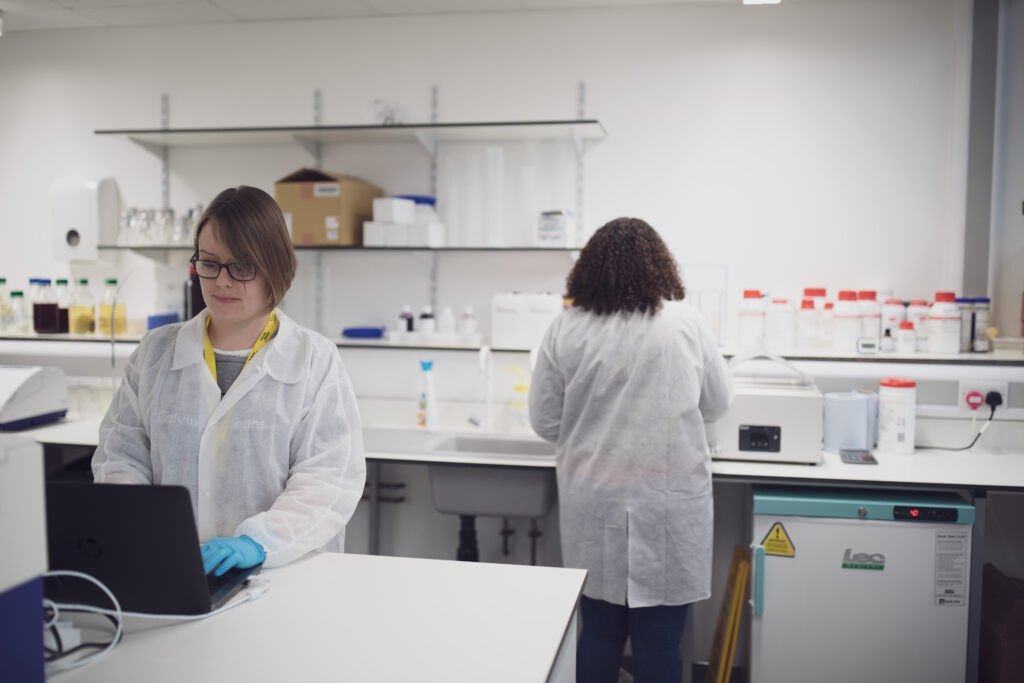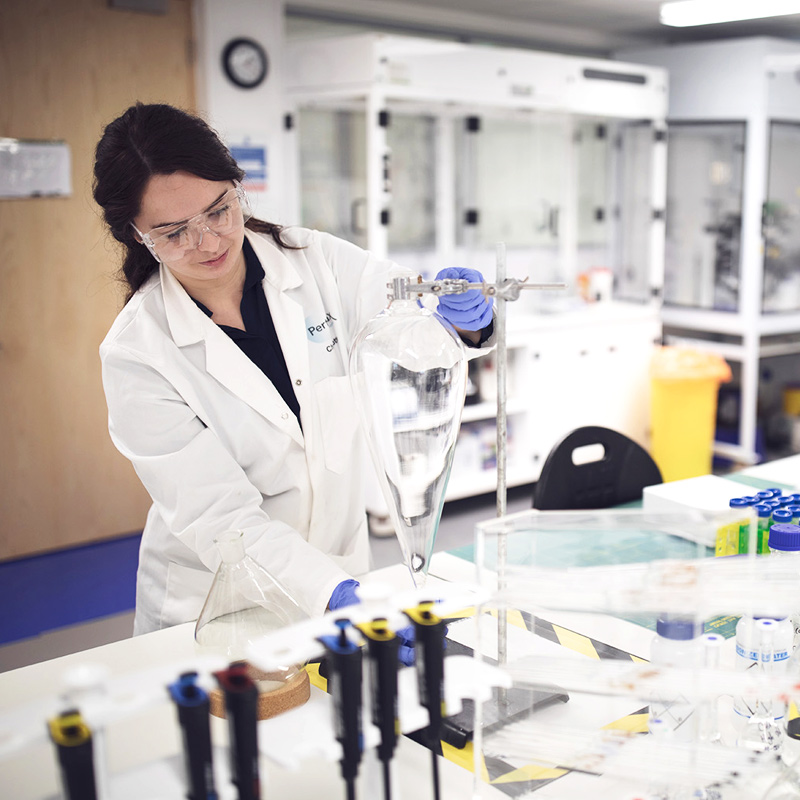Pertinax are Future Space’s original lab customers, here from the start we’ve watched the company go from strength to strength. And it’s clear after a chat with Senior Development Scientist Alex Hill, that the core of Pertinax goes far beyond just creating pharmaceutical materials, they’re out to change the world.
Alex, I usually begin with the question, ‘how did the company start?’ however, I think in your case it would make more sense to first ask, what is Pertinax?
Pertinax is a range of materials that provide sustained release of chlorhexidine. Chlorhexidine is a common antiseptic found in mouthwash, skin disinfectants and wound care products just to name a few.
The way that Pertinax differs to the usual chlorhexidine containing products, is it’s all about the controlled release of the antimicrobial material. Pertinax can last a very long time, I’m talking months, even years. And even better, the way Pertinax works decreases the chances of antimicrobial resistance; an issue which we’re hearing so much about in the media at the moment.
So essentially Pertinax innovating the pharma world. Now we have a better understanding of what you guys are up to, how did Pertinax start?
Pertinax is a spin out company from the University of Bristol. Dr Michele Barbour (CEO), is the lead of the Barbour Research Group, based at Bristol Dental School, which is where Pertinax was born. Once it was realised that gold had been struck upon, Michele pitched her idea, which was greatly received and since then we’ve evolved into the start up pharma company sitting in front of you today.
And what are you guys working on at the moment?
Our focus is on two main areas: advanced wound care, like dressings and sutures used in hospitals after surgery, we can coat that with Pertinax and its longevity makes it more viable.. And then there is the veterinary market. Do you know how hard it is to keep a farm animal with a wound from getting an infection, or to keep a dog’s infectious skin condition clean and dry when they want to jump in a river or roll in a field? The ability of Pertinax to stick around in challenging environments is impressive and can keep bacteria at bay.

You’re really covering all bases aren’t you!
That’s the aim! We’d love this technology to make a real difference in areas that need it the most. The possibilities are endless; biomedical silicones, polyurethane foams, alginates, suture material, methacrylate resins, topical creams, aerosol sprays…I could go on!
This is one of the great parts about working in Future space, you learn about all the amazing things people doing for good and reach goes so much wider than you ever initially think. Not that it feels right to ask you to big us up, after learning the wonderful things Pertinax aims to do, but what do you like about being based at Future Space?
When we first came to see Future Space it was just an empty shell, but shell or not we bagsied a lab because we had a good feeling about what the place would become. So, when we came to start work here it was almost overwhelming. The finished product is bright, clean, modern and is such a nice environment to work in. Especially compared to the other labs I’ve previously worked in, where everything is ancient, this is the complete opposite end of the scale. It really is a future space.
I’m glad we lived up to your expectations, could you imagination if you had bagsied a lab and then didn’t like it once we opened properly! Final question and I’ll let you get on with changing the world, what are the future ambitions for Pertinax?
To grow, to get bigger, expand, keep developing. And to keep knocking out this fantastic white powder (I know how that sounds) that you can do so much with. As one of the first employees, I’d love to see it go from a small start-up, which fantastic Future Space enables, to grow into a widely renowned company that really helps people.

